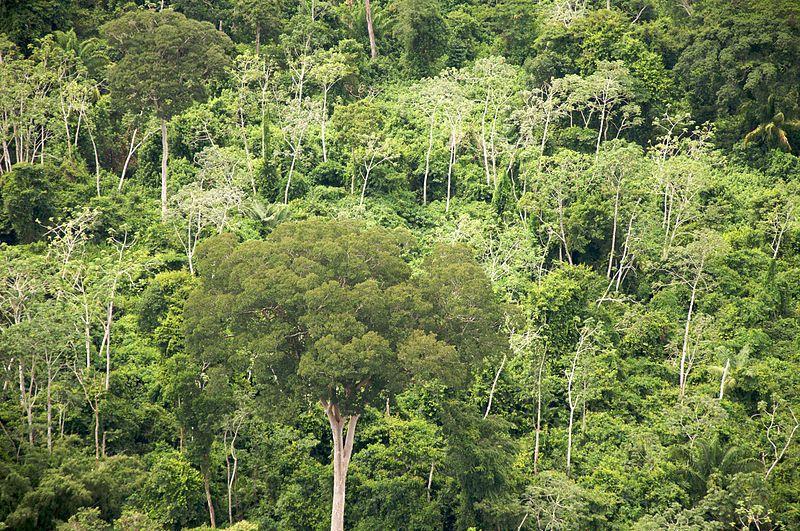What is a Dry Forest?


Also known as tropical dry forests, dry forests are a relative description. While rainforests have periods throughout the year when there is more rainfall, high rainfall occurs throughout the year. In a dry forest, there are distinct wet and dry seasons with periods of little to no rain. As with rainforests, dry forests are found in tropical and subtropical climates. During the dry season, the flora and fauna of tropical dry forests must be able to survive extended periods without much rainfall. These species are specially adapted to do do. Learn more with our article asking what is a dry forest?
What is a tropical dry forest?
A dry forest is a tropical or subtropical forest which experiences distinct periods of rain and drought throughout the year. We can find this type of forest in southern Mexico, the lowlands of Bolivia, central Brazil, the Caribbean, the valleys of the northern Andes, the coasts of Ecuador, Peru, Central India, Indochina, New Caledonia, Madagascar or southeastern Africa. Perhaps the most important and richest in biodiversity are those in Mexico and South America.
Since a forest by definition must go through long periods without rain each year, deciduous trees predominate the tree life. This is because they conserve water better than other trees and better resist drought. During periods of little rain, sunlight reaches the ground better. These seasons are good for the forest floor, despite the trees struggling to conserve water.
Dry forests are home to a wide variety of wildlife. However, they have less biodiversity than the rainforests and jungles which can also be found in tropical and subtropical regions. Animals in tropical dry forest include monkeys, various rodents, parrots, felines and a wide variety of bird species. Many of the species that live in dry forests have developed special adaptations to survive during periods of drought.
Discover the areas of the world which do have more plant and animal species with our guide to what is a biodiversity hotspot?

Climate, flora and fauna of tropical dry forests
We can better understand what tropical dry forests are like by looking at their characteristics. Some of the main characteristics of dry forests are the climate and biodiversity of plant and animal life:
Tropical dry forest climate
In tropical dry forests, average annual temperatures are usually around 77 to 86ºF (25°C to 30ºC), while in subtropical forests they are slightly lower. Average rainfall levels in dry forests range from 1000 mm to 2000 mm, but winter is the drier season. In contrast, subtropical dry forests experience lower levels of rainfall, with average annual levels between 500 mm and 1000 mm.
Fauna of tropical dry forests
Although the fauna varies from continent to continent, different deer species are one of the dominant animals in tropical dry forests. They are large herbivores that feed mainly on leaves and branches of various trees and bushes. They also consume significant amounts of grass, fruit, mushrooms and acorns.
The deer is an animal that has great importance within the food chain of these ecosystems and its disappearance would affect other species that are its prey. One such predator which preys on deer is the puma. In addition to deer, in these jungles there are also different species of felines, rodents, monkeys and birds.
Discover another type of ecosystem in which pumas thrive with our article on plants and animals of steppe biomes.
Dry forest flora
As we said, a characteristic of this type of forest is the presence of deciduous trees. This is because they are the trees which are best adapted to the changeable climate. Even many evergreen species that do appear in dry forests may behave like deciduous trees by dropping their leaves to conserve water.
Since the conditions for growth in these habitats are not as favorable as in other areas, the tree canopies are usually lower compared to other types of forests . The trees in these areas are less dense where droughts are more severe. By filtering more sunlight to the ground, they allow greater growth of seedlings, grasses and shrubs. In addition, the trees have a thicker and rougher bark, with deep roots and more varied leaf shapes, such as legumes with compound leaves.
Epiphytic plants such as orchids and bromeliads and plants such as cacti are often abundant in dry forests. This is because they can endure long periods of drought and without receiving rainfall.
Learn about the difference between cacti and succulents in our related guide.

Biodiversity in dry forests
Dry forests are home to a variety of species, although in general the biodiversity of dry forests is lower than in other types of forests. This is due to the greater environmental stress caused by the succession of dry periods. The plants and animals must cope with these harsher conditions through different adaptations. Some of these species are seasonal, meaning they are animals that migrate. These include migratory birds in Central America or India.
The plant and animal species of dry forests are characterized by having a greater seasonality in their reproductive cycles. Many animals will migrate to wetter areas during the dry season for reproductive purposes. Some have short life cycles or remain dormant during the driest periods.
In addition, dry forests are very sensitive to factors such as excessive forest fires, deforestation, overgrazing or the introduction of invasive exotic species. All of these processes have increased in recent times, often due to human influence and climate change. This is why many tropical dry forests are facing crises in terms of their survival and conservation efforts are underway to protect them.
Discover other ways in which forests are categorized with our article asking what is a sclerophyllous forest?
If you want to read similar articles to What is a Dry Forest?, we recommend you visit our Ecosystems category.







